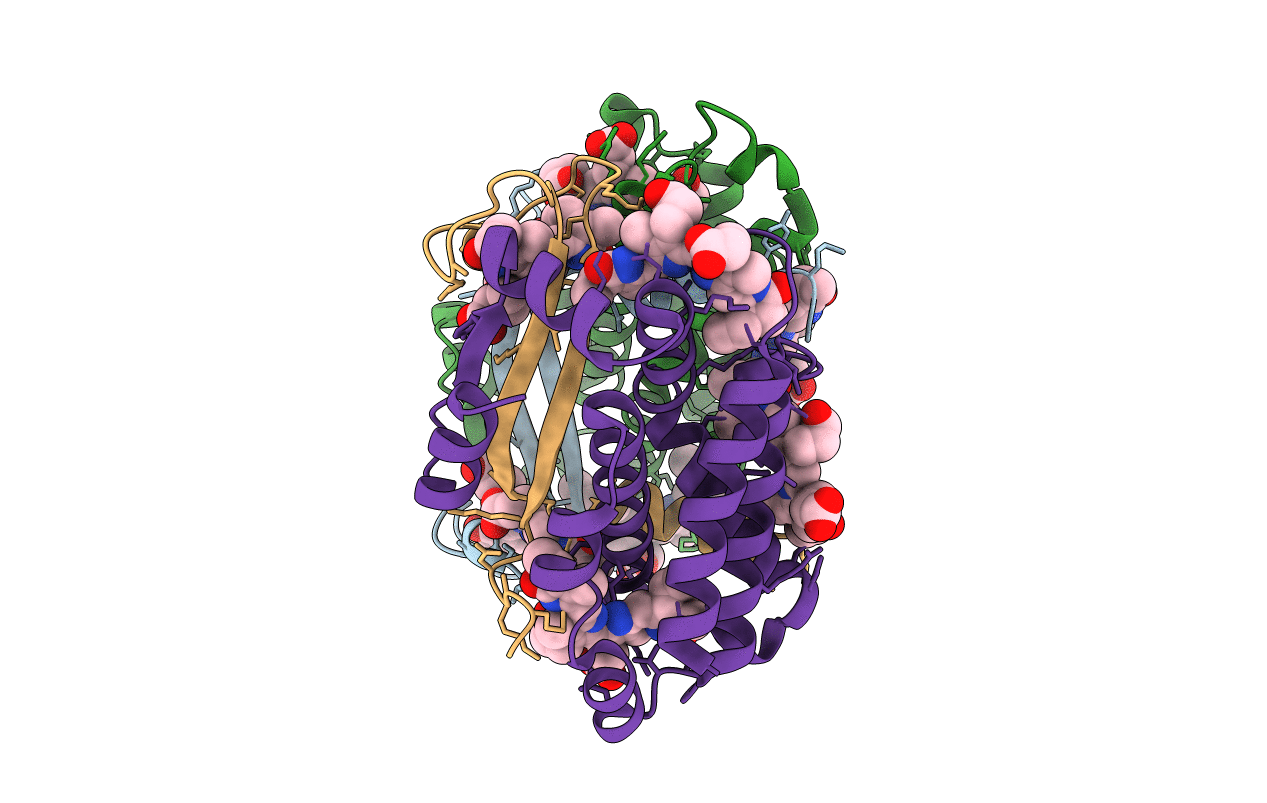
Deposition Date
2021-09-20
Release Date
2022-02-09
Last Version Date
2024-10-23
Entry Detail
PDB ID:
7S96
Keywords:
Title:
Structure of the Light Harvesting Complex PC577 from Hemiselmis pacifica
Biological Source:
Source Organism:
Hemiselmis pacifica (Taxon ID: 478131)
Method Details:
Experimental Method:
Resolution:
1.80 Å
R-Value Free:
0.21
R-Value Work:
0.17
R-Value Observed:
0.17
Space Group:
P 21 21 21


